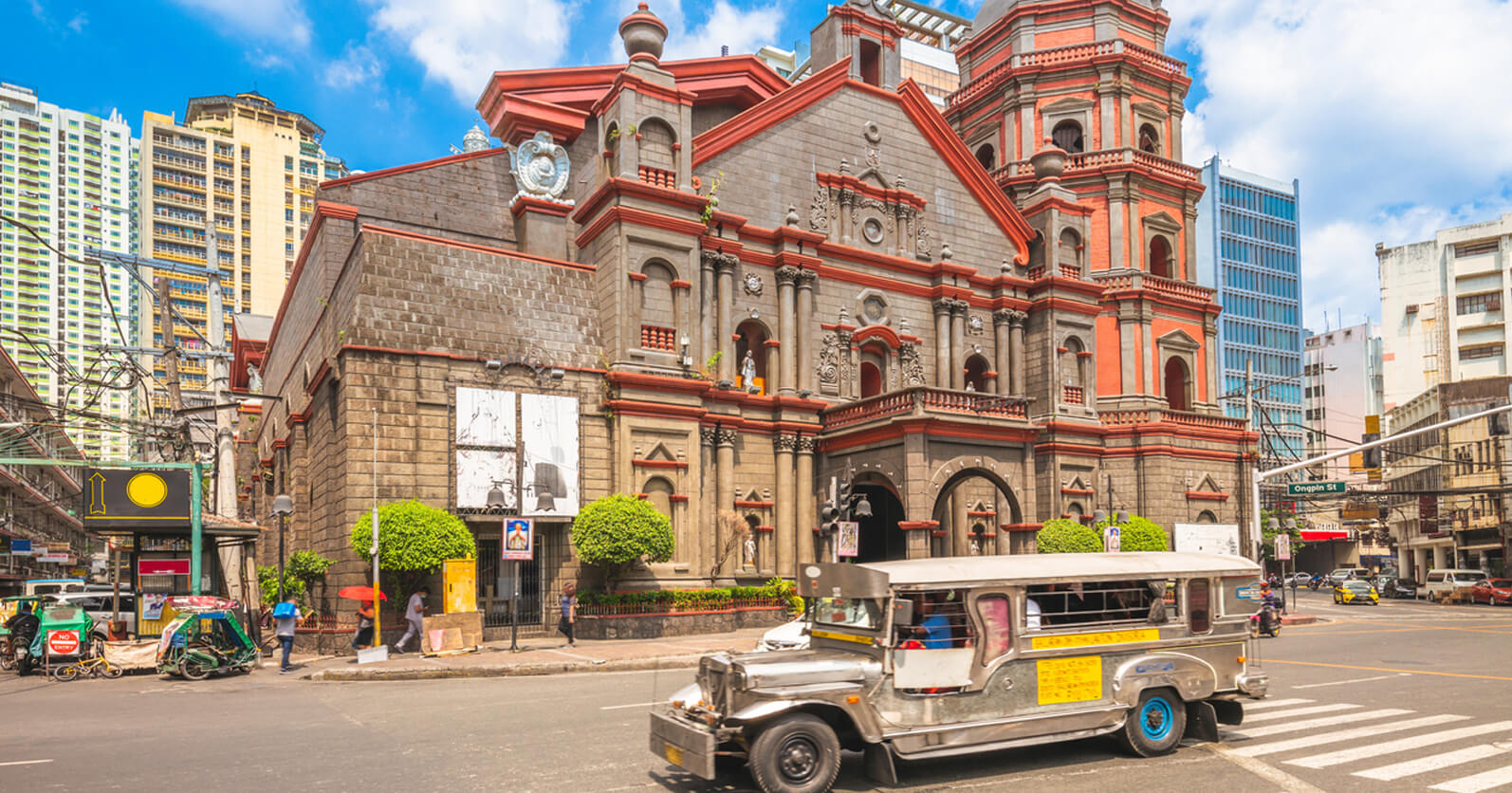
How to retire in the Philippines as a foreigner
The Philippines is becoming a popular destination amongst international travellers and foreigners. Known for its vibrant culture, beautiful tropical weather and crystal clear beaches, the Philippines is the perfect getaway spot for short and long-term holidays. So it’s not a surprise that non-Filipinos also choose to retire in the Philippines.
The excellent news is that the Philippine government offers an attractive package for non-Filipinos to encourage them to retire in the Philippines. This comprehensive guide will provide you with more information and help you plan your retirement in the country as a foreigner.
About the Philippines

Official Name: Republic of the Philippines
Capital: Manila
Size: The Philippines is an archipelago consisting of 7,107 islands, with a landmass measuring approximately 300,000 sq. km.
Location: Southeast Asia
Time zone: UTC +8
Population: 110.8 million (Worldometer, 2021)
Currency: Philippine Peso (PHP or ₱)
Official languages: Filipino and English
International dialling code: +63
Why retire in the Philippines?

The Philippines is becoming a popular retirement destination globally and is now the leading retirement country in Southeast Asia. Here are some of the reasons why it’s best to retire in the Philippines:
1. Low cost of living
One of the things retirees consider when looking for a place to settle is the cost of living. According to Numbeo, the Philippines’ cost of living is about 44% lower than that of the UK. It is also lower than 69% of the countries in the world.
To give you a better idea of the Philippines’ living costs, we’ve listed some estimated costs of goods and services in the country:
Accommodation (Monthly Rent)
City Centre
1 bedroom apartment: ₱16,542.14
3 bedroom apartment: ₱33,284.51
Outside the City Centre
1 bedroom apartment: ₱9,246.17
3 bedroom apartment: ₱18,679.57
Utilities (Monthly Bills)
Apartment Electricity, Water, Heating/Cooling: ₱6.043.10
Internet: ₱2,262.19
Groceries
Rice (1kg): ₱50.75
Loaf of Bread (500g): ₱58.49
Chicken (1kg): ₱197.27
Beef (1kg): ₱312.92
Milk (1 litre): ₱86.44
Eggs (1 dozen): ₱88.83
Water (1.5 litres): ₱38.67
Transportation
One-way Transport Ticket: ₱10.00
Monthly Pass: ₱533.00
Gasoline (1 lire): ₱50.51
Taxi (1km): ₱13.50
2. English is a widely spoken language
Another reason why it’s great to retire in the Philippines is that almost everyone in the country speaks or understands English. Nearly two-thirds of the Philippines’ population have some level of fluency in English, making it one of the largest English-speaking nations in the world.
Though English is an official language alongside Filipino, there are over 100 languages spoken across this archipelagic country. Naturally, you’ll enjoy living in the Philippines without having to worry about any communication barrier, but learning a new language can be a fun pastime, which can also benefit you in the long run.
3. Variety of lifestyles
Every city, province and island has its way of life. You can choose from a wide variety of lifestyles – from living in a busy, bustling city to residing in a more relaxing, beautiful seaside. You will have a plethora of choices, so take your time to find the best place for you to retire in the Philippines.
Amongst the 7,107 islands in the Philippines, over 5,000 are habited. This means that you have plenty of options to choose from where you can finally settle down.
Is the Philippines the right place for you?

Before you decide to retire in the Philippines, it’s best to know what it’s like living in the country. So try and do the following:
1. If you've never been to the Philippines, visit the country.
Visiting the Philippines will give you a clearer picture of what the country is like. Understand what you like and don’t like about the place and see if you’ll fit in well.
2. Try and adopt the local Filipino way of life.
Keep in mind that visiting any country for tourism purposes is very different from actually living there. When you’re in the Philippines, try and adjust to your normal day-to-day lifestyle instead of behaving as if you’re on holiday.
3. Visit the less popular and more rural provinces.
It’s important to know that the cost of living in big urban cities like Manila and Cebu is much higher than that of the rural provinces. Check out different rural provinces if you want your savings to go a long way.
Once you’ve tried these out, you’ll know better if the Philippines is the best country for you to retire.
How to retire in the Philippines?

To retire in the Philippines, you need to secure the Special Resident Retiree’s Visa (SRRV). The SRRV is issued by the Bureau of Immigration (BI) of the Republic of the Philippines under the Retirement Program of the Philippine Retirement Authority (PRA) to foreigners and overseas Filipinos. This visa entitles holders to multiple entry and the right to stay in the Philippines indefinitely.
Applying for a visa is relatively straightforward and is much easier than the country’s Southeast Asian counterparts. We’ll walk you through the process to help you understand which steps you need to take.
To be eligible for the SRRV, you must meet the following requirements:
With pension
- 50 years old and above
- Time deposit: US$10,000
- Monthly pension for single applicant: $800
- Monthly pension for a couple: $1,000
Without pension
- 35 to 49 years old – US$50,000 time deposit
- 50 years old and above – US$20,000 time deposit
- Former Filipino citizens (at least 35 years old, regardless of the number of dependants – US$1,500)
- Ambassadors of foreign countries who served and retired in the Philippines, current and former staff members of international organisations including ADB (at least 50 years old) – US$1,500
Spouse/children of principal retiree
- A resident retiree can bring his spouse and child (unmarried and below 21 years old) without any additional deposit.
- If the spouse is not joining, the principal retiree can bring two children (unmarried and under 21 years old) without any additional deposit.
- Additional children (unmarried and under 21 years old) may also be allowed to join the principal retiree provided there is an additional deposit of US$15,000.00 per child. However, the said time deposit is subject to the same terms and conditions as the principal deposit. This does not apply to former Filipino Citizens.
How to retire in the Philippines: FAQs

What is the validity of SRRV?
The SRRV is valid indefinitely, so retirees holding this type of visa can live in the Philippines without extending their stay.
Are SRRV holders exempted from Travel Tax?
PRA members who hold a valid SRRV do not need to pay travel tax as long as they have not stayed in the Philippines for over a year from the date they last entered the country.
Can SRRV holders own real estate in the Philippines?
No they can’t. SRRV holders can only build a residential property on any land owned and/or registered under their Filipino spouse’s name. However, natural-born former Filipinos who hold an SRRV may own up to 5,000 square meters of urban land or up to three hectares of agricultural land.
Who approves the SRRV application?
The Bureau of Immigration provides the decision on SRRV applications. However, the applications are filed with the Philippine Retirement Authority, who also pre-evaluates the applications.
How long is the processing time for the applications?
It usually takes about 7 to 10 working days upon receipt of the application and requirements.
Can my spouse and children be granted an indefinite status to live in the Philippines?
Yes, they can. However, only legitimate and legally adopted unmarried children below 21 years old can get an indefinite privilege to accompany or join you shortly after your admission into the Philippines.
Is there an additional deposit for unmarried children who will accompany me?
Yes, there is an additional deposit of US$15,000 for every additional legitimate or legally unmarried child below 21 years old.
Sending money to the Philippines

Once you’ve opened a bank account in the Philippines, it would be best to send your money to the Philippines through Kabayan Remit and here’s why:
- Benefit from high exchange rates and low service fees.
- Conveniently get in touch with 24/7 customer support.
- Have peace of mind when sending large amounts with its world-class compliance and bank-level security.
For more information, visit kabayanremit.com.
